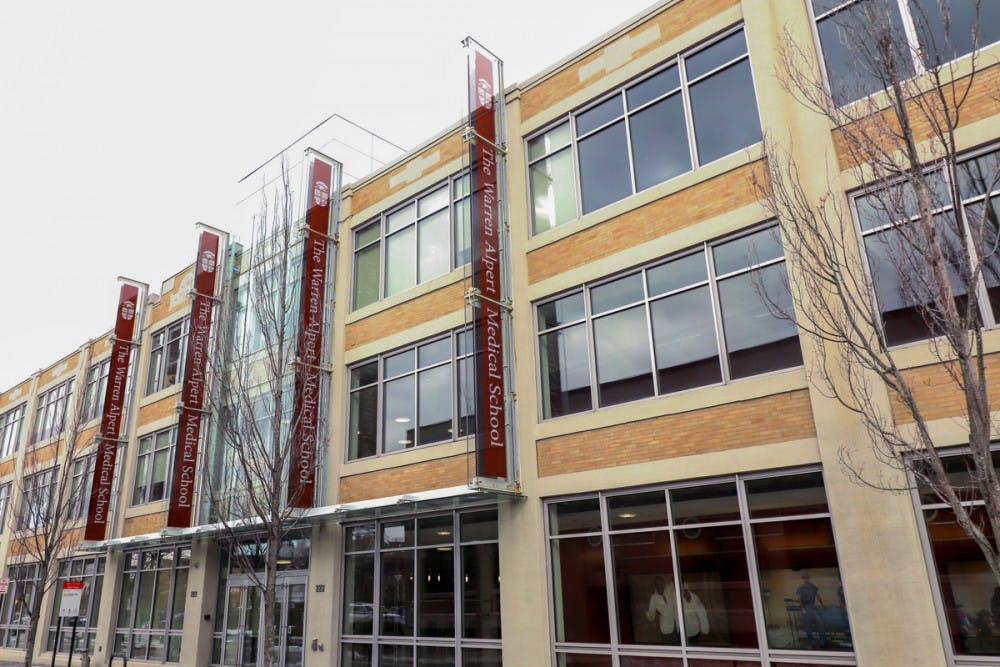[lwptoc depth="3" skipHeadingLevel=""]
The Cancer Center at Brown University announced the funding of eight pilot projects that aim to innovate and pioneer in the field of cancer research last December. The intent of the funding was to “provide investigators with the opportunity to collect preliminary data … so they can be competitive for external funding,” Director of the Cancer Center Wafik El-Deiry said.
“Our goal was not only to support outstanding basic science research and collaboration, but also translation” of that research into clinical practice, El-Deiry said.
Applications for funding opened to researchers at the University and affiliated hospitals last summer. Application reviewers looked for projects that aligned with the Cancer Center’s three programs: cancer biology, cancer therapeutics and population science.
The Herald spoke to three of the four principal investigators of the pilot projects that received a grant for research related to cancer therapeutics.
Assistant Professor of Medicine Alexander Raufi ’08 MD’13 studies the development of new immunotherapy treatment combinations in gastrointestinal cancers. His pilot project will evaluate the potential of a new chemotherapy drug in combination with an inhibitor of enzyme mitogen-activated protein kinase to fight aggressive cancer growths that are a result of a mutation.
The Dawson lab: Exploring ways to combat Polyploidal Giant Cancer Cells
Assistant Professor of Biomedical Sciences Michelle Dawson studies how interactions between cancer cells and the environment affect tumor development. For her pilot project, Dawson is focusing on Polyploidal Giant Cancer Cells, which are special, abnormally large cancer cells that contain extra copies of genetic information and pose a unique challenge to clinical treatment.
PGCCs are “highly resistant to both radiation and chemotherapy,” Dawson explained.
When Dawson first started studying these cells, “many people thought they were dead-end cells,” she said. Since PGCCs do not use mitosis to replicate, as normal cancer cells do, scientists at the time believed that PGCCs could not give rise to new cancer cells, she added.
Eventually researchers discovered that PGCCs produce new cancer cells through a process called budding, which is triggered by cell processes that are not yet well understood. PGCCs can lie dormant for months at a time before budding, meaning that even after normal cancer cells are eliminated from a cell sample, they can reappear as long as PGCCs are present.
Through isolating PGCCs and studying the timing and conditions under which they bud, Dawson hopes to gain a better understanding of what she believes is a “missing link” to understanding cancer relapse.
In addition to studying PGCC dormancy, the Dawson lab will use the Cancer Center funding to study ways to effectively destroy the cancer cells, which could eventually contribute to the development of new treatments.
This project “fits perfectly within this funding mechanism because it's a small problem, but it’s an important problem,” Dawson said. “Trying to figure out what can kill (PGCCs) is really important … because if these cells remain, then the cancer will come back.”
The Tapinos lab: Using a Parkinson’s drug for Glioma brain tumor treatment
Associate Professor of Neurosurgery Nikos Tapinos studies the regulation of human glioma stem cells, which can be found within glioma brain tumors. These stem cells possess the unique ability to self-renew, proliferate and give rise to different cell types within the tumor, an adaptability which makes gliomas difficult to treat.
Previous work on glioma tumors from the Tapinos lab identified FTO (fat mass and obesity-associated protein), an enzyme that is overexpressed in glioma stem cells and which contributes to the heterogeneity of the tumors.
The lab’s pilot project focuses on FTO inhibitor Entacapone’s impact on glioma tumors. Entacoapone is already an FDA-approved drug for Parkinson’s disease, but its potential to treat glioma tumors has not yet been studied, Tapinos said.
The lab began studying the effect of Entacapone on human stem cells in culture and found that it prevented the division of the cancer patient-derived stem cells in all trials. “The effect was tremendous,” Tapinos said.
Using the Cancer Center funds, the lab plans to study the effect of Entacapone on tumors in living organisms by transplanting glioma stem cells from human patient tumors into the brains of mice. Then, they will be able to study the effect of Entacopone on tumor development over several months. If the data looks promising, they hope to conduct clinical trials in human patients in the future.
“We have a lot of good data already and this is very promising,” Tapino said. “Even if we manage to extend (glioma patient) life expectancy for some months, years, that would be insane.”
The Sahin lab: Testing novel drug’s ability to increase efficacy of immunotherapy
Assistant Professor of Medicine Ilyas Sahin’s pilot project aims to increase positive outcomes for immunotherapy, which reprograms the body’s natural defense system — the immune system — to recognize and attack cancer cells. The Sahin lab hopes to find solutions for immunotherapy resistance and hyperprogression, which is when the cancer becomes more aggressive following immunotherapy.
To do this, the researchers have been looking for ways to simultaneously inhibit two proteins that are present at higher levels in patients with hyperprogression. In earlier studies, they inhibited one of the proteins resulting in no significant positive effect. The researchers selected a novel drug with the ability to inhibit both proteins, which they think will be “more promising,” Sahin said.
Sahin plans to use the Cancer Center funding to expand the lab’s culture-based experiments, injecting human cancer and immune cells into mice and then administering the medication to the mice to test the drug’s effectiveness.
If the animal trials are successful, Sahin hopes to open clinical trials at Brown for patients who have failed or developed resistance to immunotherapy. “We are trying to move forward and take this from the bench to the clinical side and see what happens,” he said.
“If it works, this is huge,” Sahin said. This could allow patients for whom immunotherapy was previously not an option to undergo this method of treatment, he added.





